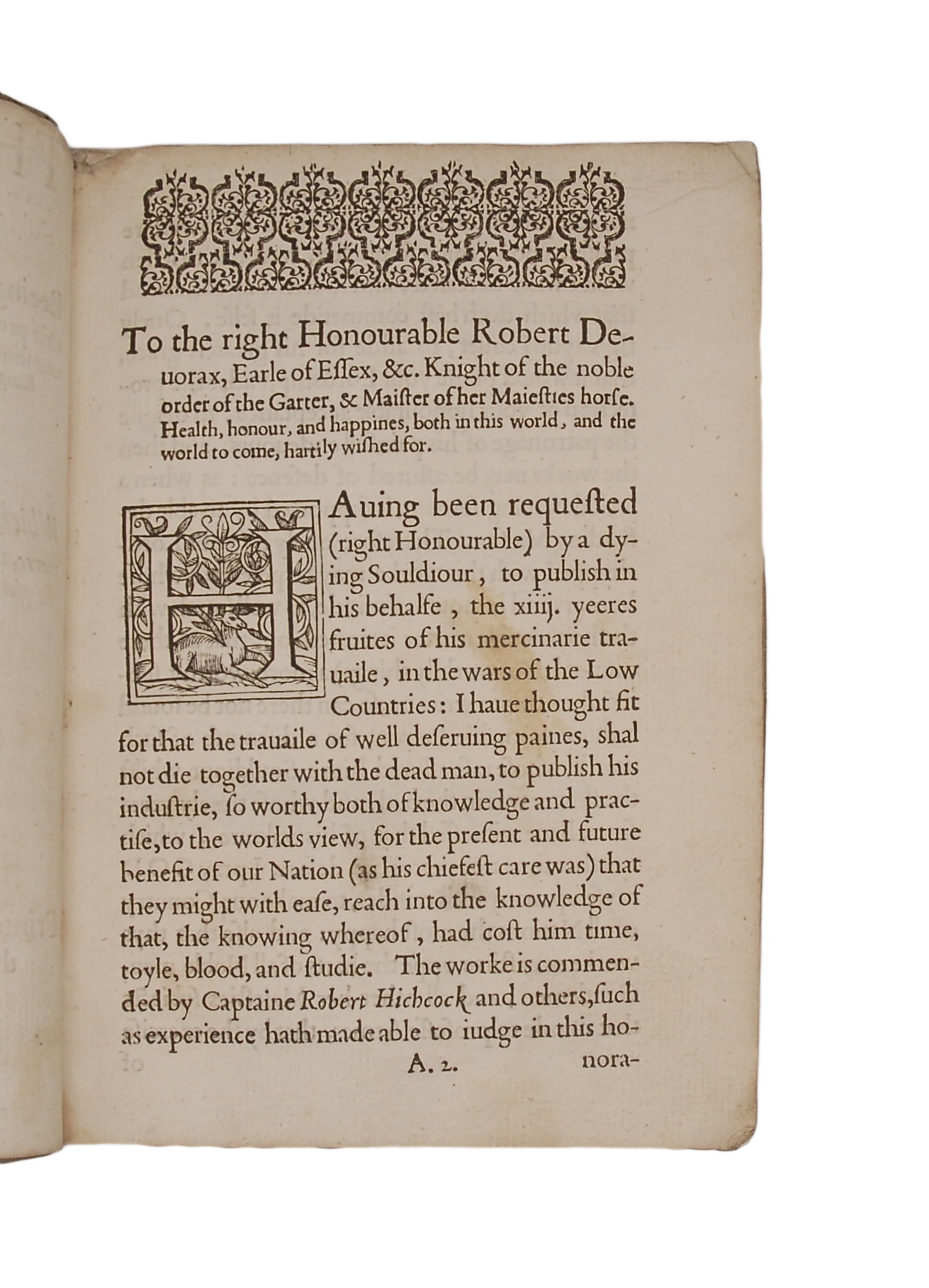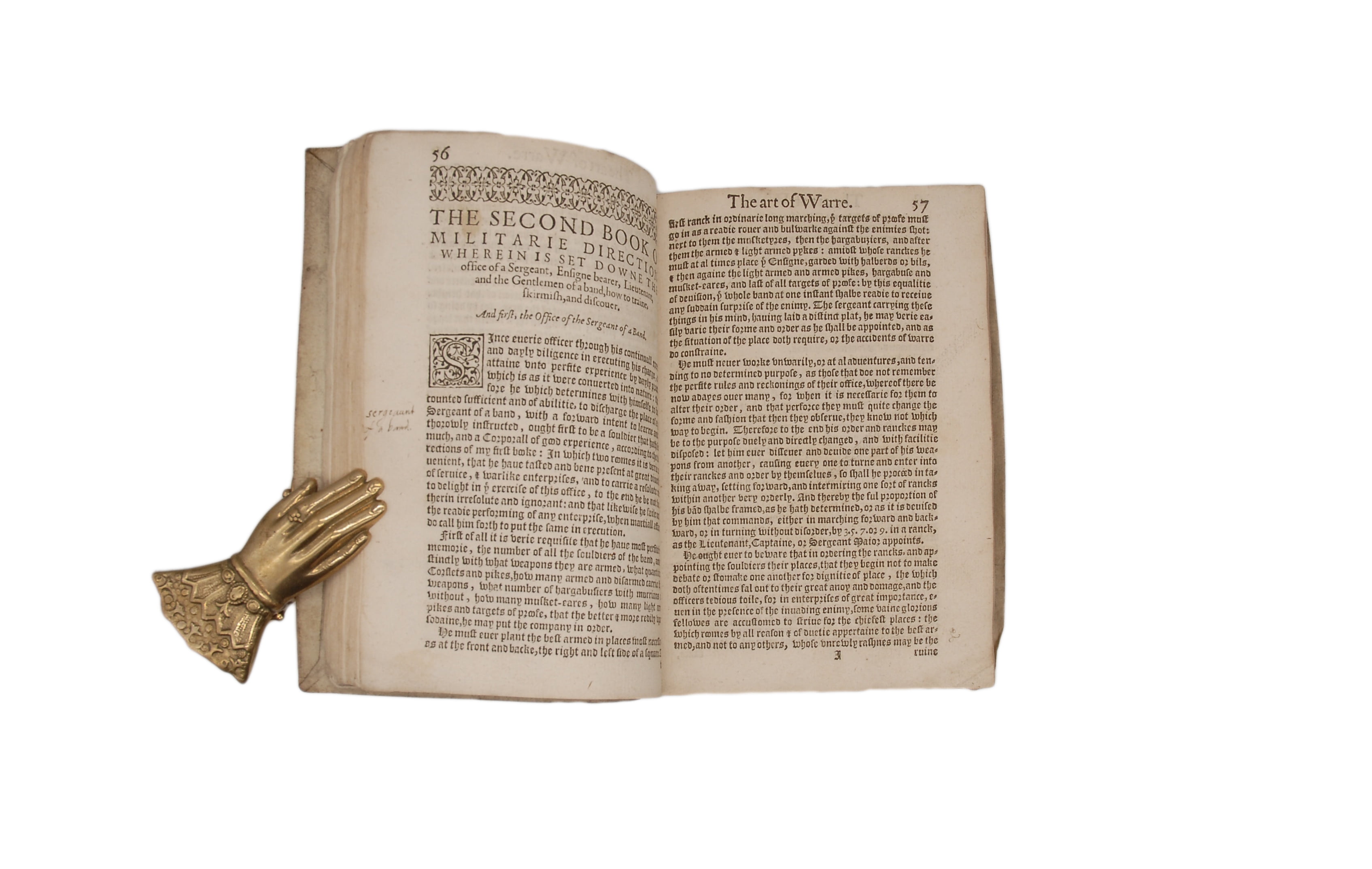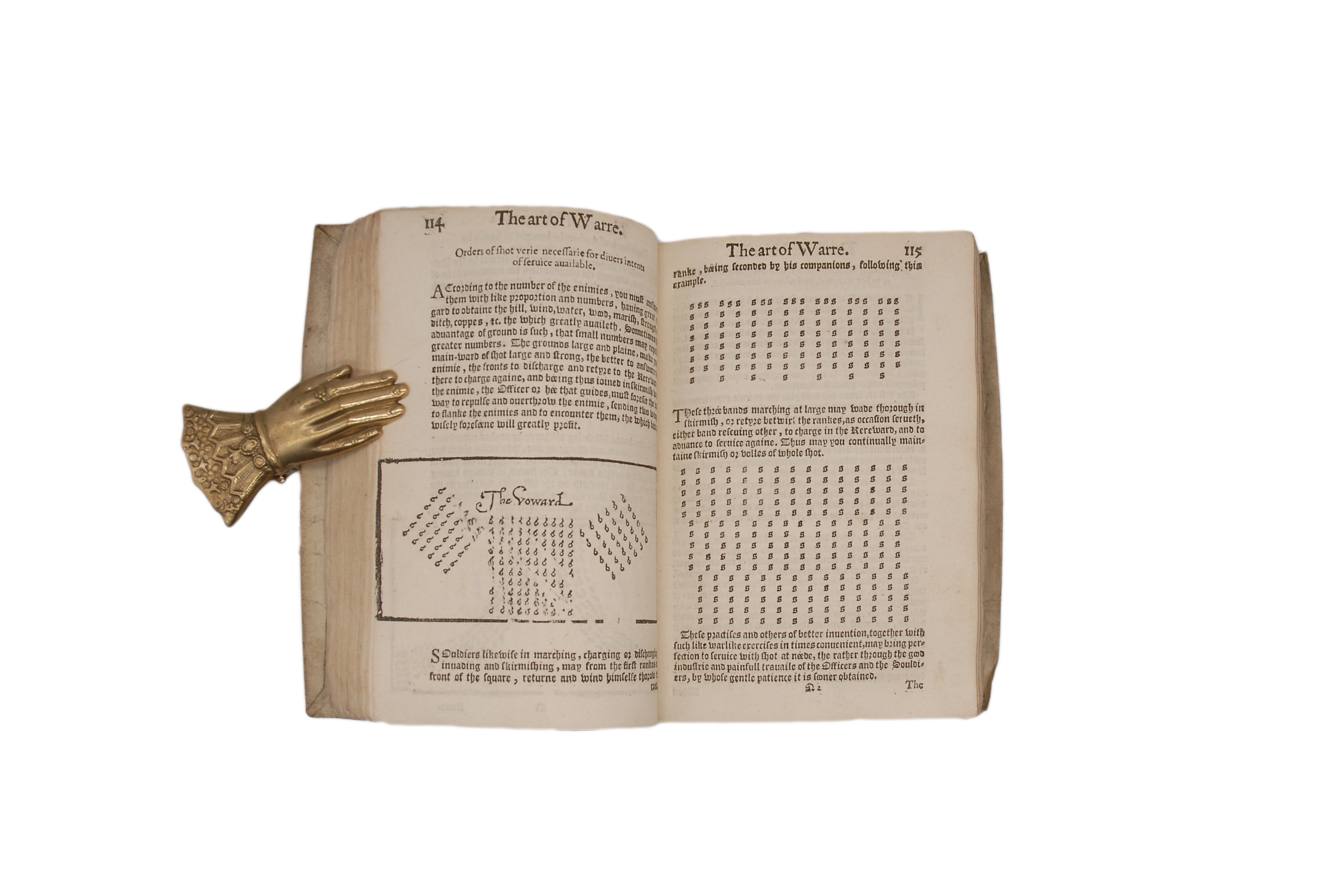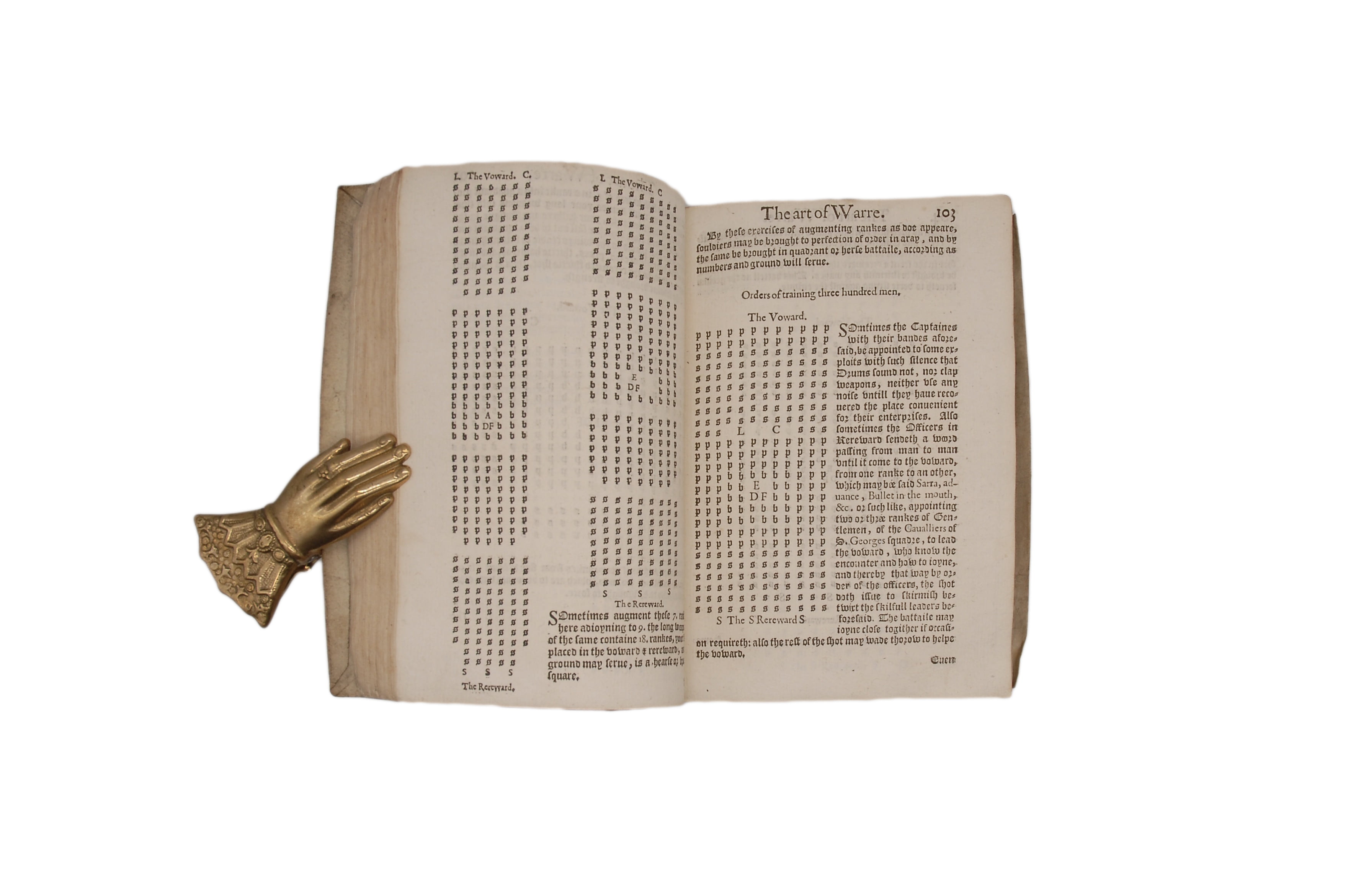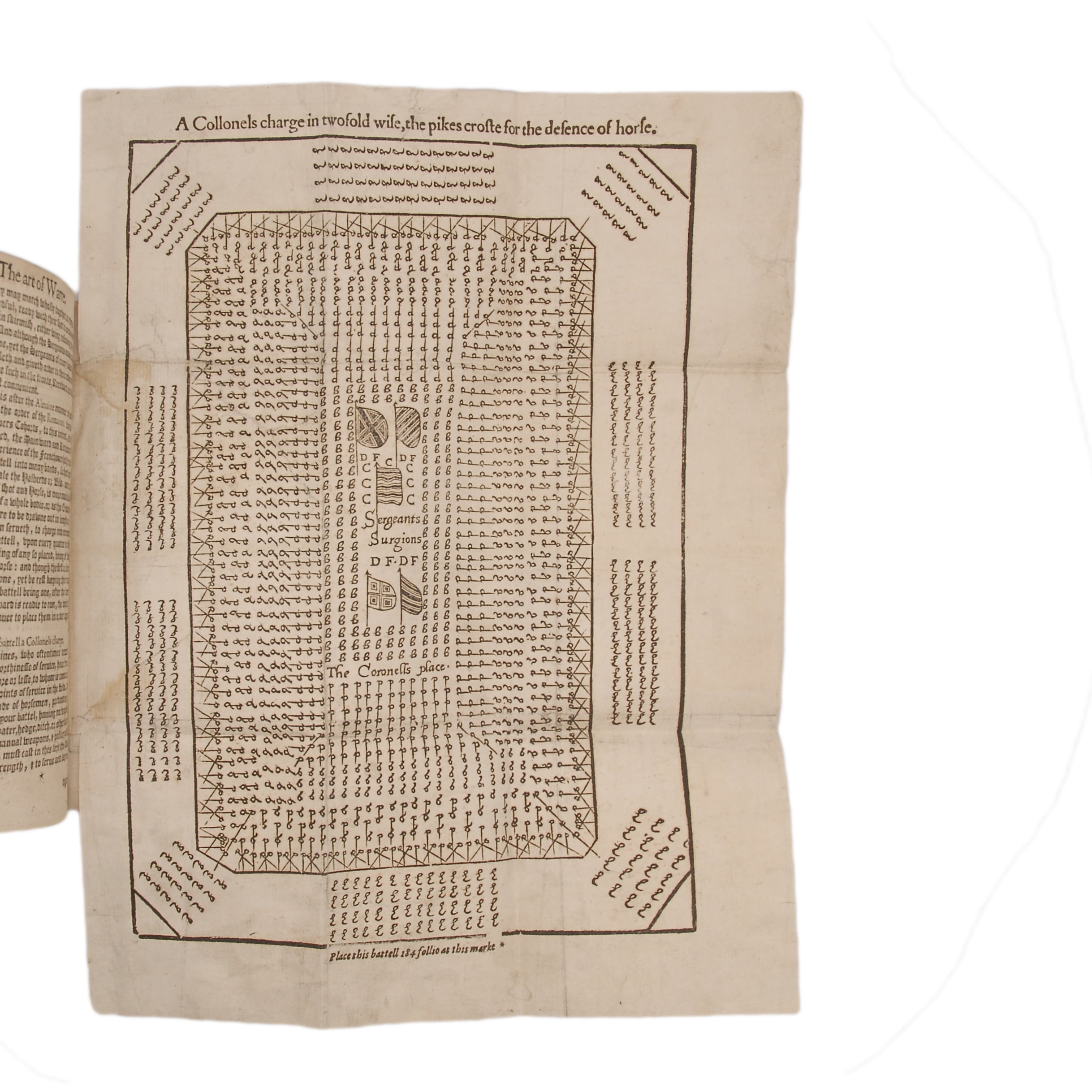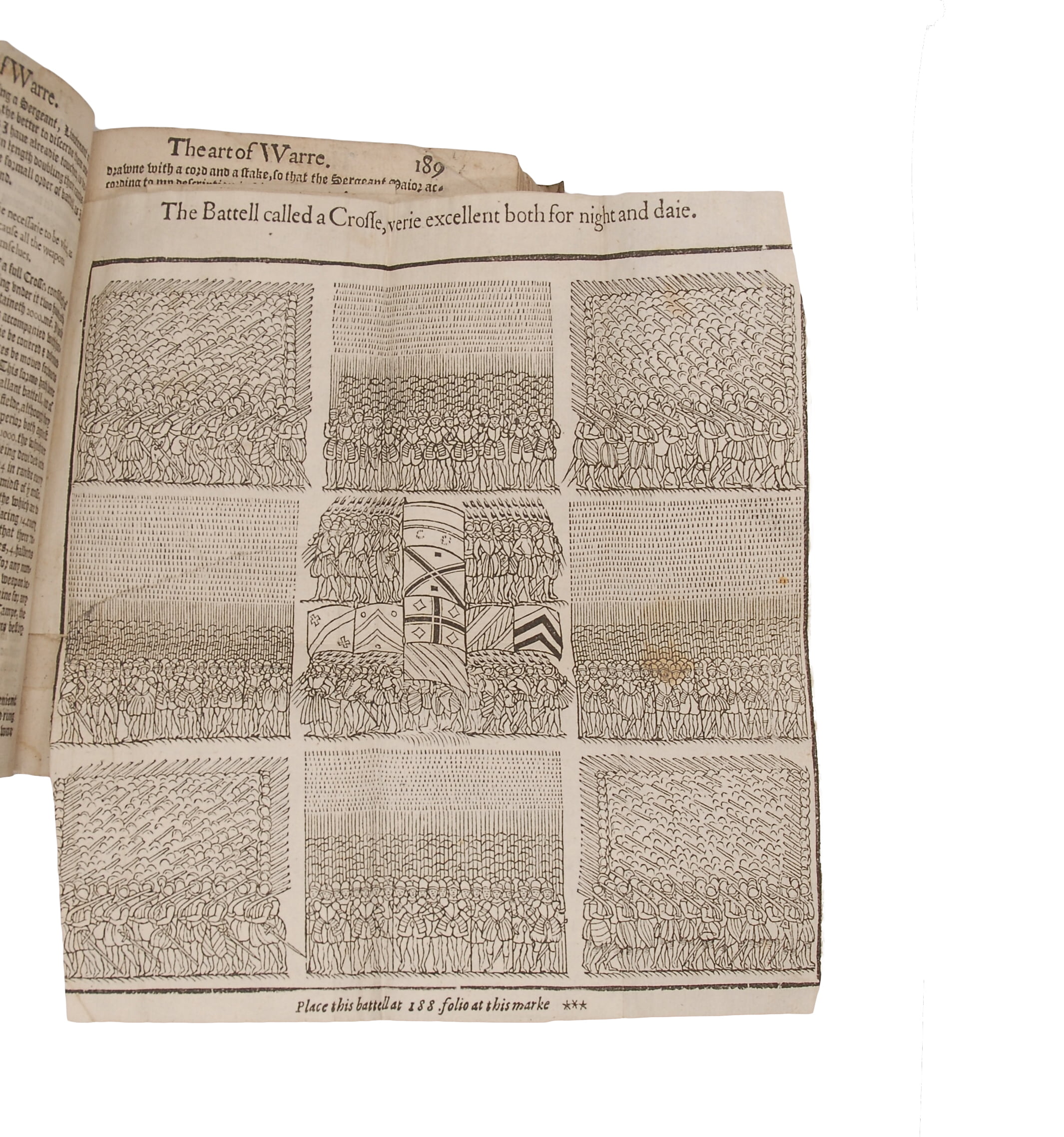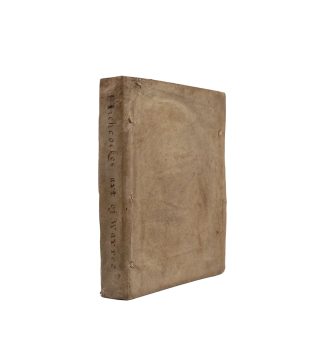GARRARD, William
IN ORIGINAL CONDITION
The Arte of Warre
London, Roger Warde, 1591£18,000.00
FIRST EDITION. 4to. Pp. [xii] 368 [ii], error in pagination 78-81, text uninterrupted. Black letter, some Roman. 7 folding woodcut plates, plate preceding p. 185 is backed, old repairs to plates preceding pp. 187 and 253, repaired tear in first of two plates preceding p. 189, all without loss. Ornate woodcut decorations, as well as typographical figures of military formations. T-p slightly dusty. Light mark on A2, text not obscured. Blank upper outer corner of pp. 189-192 torn, very light yellowing, upper margin a bit short. Minor oil stain pp. 359-end, text not obscured. A very good, clean copy in contemporary limp vellum wrapper, original stab sewing, covers slightly soiled with minor wear. Contemporary price 2s 6d ms to t-p. Light contemporary annotation, largely to pp. 6-69, one marks a print error. Note inside, 1939, by Thomas Fremantle, 3rd Baron Cottesloe, describes copy as ‘perfect’ and notes its rarity.
Unsophisticated copy of this first edition treatise on war, which has been called ‘the fullest contemporary account of the organization and equipment of 16th century artillery units’ (Webb, 1955, 197). It advertises itself as ‘the onely rare booke of myllitarie profession: drawne out of all our late and forraine services’. The book promises to cover ‘the true steppes of warre, the perfect path of knowledge, and the playne plot of warlike exercises’, and to ‘shew and teach the order of the Fielde, the duety of Officers, the charge of Generals, the arte of Warre, & the whole discipline belonging to the exercises of Armes, and marshalling of a Campe and Armie’. The work chiefly contains ‘descriptions of the establishing, manning, and equipping of virtually every possible battle formation and troop encampment’ (Acheson, 2011, 152). Garrard combines classical military theory with personal experience, and reflects on contemporary developments in the technology of warfare. He coined the phrase “loop-hole” in this work, in relation to the building of a fortification. His writing is clearly influenced by contemporaries, particularly Digges and Thomas Styward.
The 7 folding woodcut plates depict elaborate encampments and formations, and include representations of soldiers, cannons, fortifications, and geographical features. This text features 72 woodcut illustrations as well as the 7 foldouts of varying sizes. Some 25 of the illustrations are diagrams formed with type characters used for the rest of the text, while others are formed from woodcut characters massed into formations. The remaining illustrations are diagrammatic woodcuts. The woodcuts are simple, but the images are crisp and clear. Particularly notable is the first of two folding plates on p. 189, ‘The battell called a crosse, verie excellent for both night and daie’: it unusually conveys three-dimensional space depicting the rows of soldiers in battle formation. It also depicts naturalistic figures, as a contrast to the typographical illustrations found elsewhere. The plate on p. 253, showing ‘A Waie to March’, also depicts naturalistic figures, both cavalry and infantry in battle formation, but in two-dimensional space. Hichcock’s preface describes the illustrations as both an aid to memory and a selling point of the book.
Garrard was a businessman, banker, and slave trader, but also had personal experience in military affairs: he served ‘the King of Spayne in his warres fourteene yeeres’, as he claims on the titlepage, and was a veteran of the Dutch wars. This copy includes a dedicatory letter by Garrard addressed to Robert Devorax, Earle of Essex, who was executed for treason in 1601 after a failed coup d’état against the government. This text was published posthumously, after Garrard’s death in 1587, by Hitchcock, who added an appendix on logistics.
| Language |
|---|
In stock




